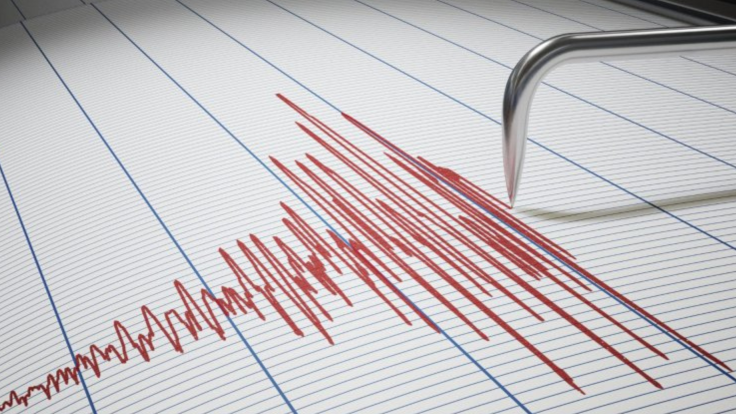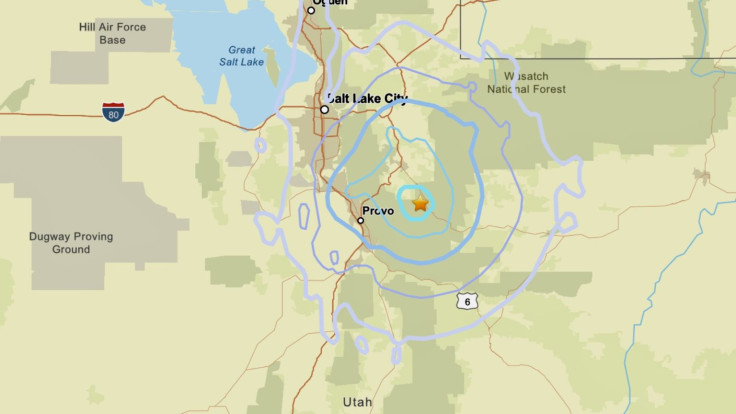Northern Utah Rattled by 3.9-Magnitude Earthquake as Tremors Felt From Spanish Fork to Bountiful
The earthquake affected several Wasatch Front cities, including Provo, Orem, and Bountiful.

In the quiet early hours of Thursday, 1 May 2025, thousands of Utah residents were jolted awake by an unexpected earthquake that registered a magnitude of 3.9 on the Richter scale. According to confirmation by the US Geological Survey (USGS) and the University of Utah Seismograph Stations (UUSS), the quake occurred precisely at 12:11 a.m. local time.
Its epicentre was pinpointed roughly 12 miles southeast of Strawberry Reservoir and 19 miles east of Provo, an area known for occasional minor seismic activity. The shaking was felt across a significant stretch of the Wasatch Front, a metropolitan corridor that includes towns and cities such as Heber, Spanish Fork, Orem, and Bountiful. By 1:15 a.m., over 1,500 people had submitted 'Did You Feel It?' reports to the USGS website, indicating the tremor's widespread reach despite its moderate strength.

A Notable Seismic Event in a Historically Active Region
Although no significant damage or injuries were reported, the quake stands out as one of the strongest in the region in recent years. According to the UUSS, the area surrounding the epicentre has experienced at least 58 earthquakes of magnitude 2.0 or higher since 1981. The previous most notable event occurred in June 2021, when a magnitude 3.6 quake was recorded within 15 miles of Thursday's epicentre.
Seismologists note that the Intermountain West region, which includes Utah, lies within a known area of fault lines, making it susceptible to both minor and more destructive seismic activity. The 3.9-magnitude quake may be considered minor on the scale, but its reach and the strong responses from residents show how even moderate quakes can cause alarm, especially when they occur during sleeping hours and are accompanied by audible rumbling and movement.
Public Response: From Startled Sleepers to Viral Reactions
Reactions from residents flooded social media within minutes of the event, with many describing being suddenly awakened by rumbling floors, rattling windows, and creaking walls.
'I live in Orem and felt it,' Mandie Heinze wrote on Facebook. 'I have a three-storey home. My whole house was shaking the windows were rattling. I thought someone was under my bed shaking it.'
In Pleasant Grove, another resident said they initially mistook the quake for a strong wind gust before feeling the full movement of the house. Others likened the shaking to past seismic events, such as the aftershocks following the 2020 5.7-magnitude earthquake near Salt Lake City. 'This one shook for a while and it was noisy,' said a resident from West Jordan.
Such community responses highlight both the psychological impact and the geographical breadth of the quake's effect. Even in areas where the quake was not severe, residents reported hearing loud thuds or experiencing pets reacting to the vibrations— an well-known early sign of tremor activity.
An Ongoing Reminder of Preparedness
Though officials have confirmed that there were no reports of casualties or property damage, the earthquake has once again brought to light the importance of earthquake readiness in Utah. The Wasatch Front, home to over 80% of the state's population, sits along the Wasatch Fault— a major geological fault line capable of producing even stronger earthquakes. Going forward, experts urge residents not to dismiss minor quakes as isolated incidents but to see them as a warning to stay prepared. Additionally, a spokesperson from the Utah Department of Public Safety advises households to keep 'emergency kits, secure heavy furniture, and establish communication plans.' While Thursday's quake may not have caused any immediate harm, its widespread impact serves as a reminder that seismic awareness and readiness remain crucial in Utah's ongoing efforts to mitigate future earthquake risks.
© Copyright IBTimes 2025. All rights reserved.



















